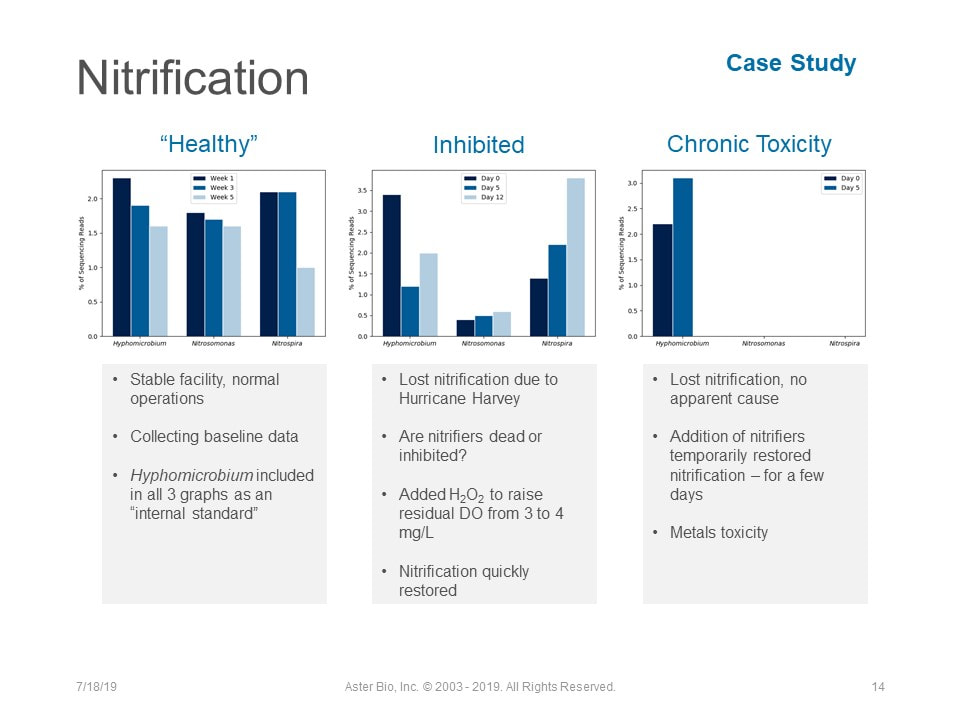- Find out why you lost nitrification. A previously stable nitrifier population, just doesn't get up and leave. You had a gradual loss of nitrifiers in the system or some type of shock that caused a rapid drop in populations. Find out what happened and then evaluate control options.
- Run influent Total Nitrogen (TKN), ammonia, amines to discover how much nitrogen is entering that needs to be oxidized.
- If you have a history of nitrifier loss, you can use qPCR and MCA to track AOB/NOB populations. Molecular testing will show population changes well before effluent ammonia increases. I have found molecular testing effective in adjusting MCRT, F/M, and identifying chronic toxicity to nitrifiers.
- Run an acute nitrifier toxicity test if you cannot find reasons for the loss in activity or suspect influent inhibition. Acute testing involves using a concentrated nitrifier culture in a 2 - 3 hour test to determine % inhibition of AOB activity.
- After you correct the situation and get an environment suitable for nitrifier growth, they will eventually grow back to needed levels. However, this can take longer than is acceptable. Nitrifier recovery time can be reduced by adding commercial nitrifiers. These nitrifier concentrates require refrigeration and have a very short-shelf life, so consider logistics when preparing to use the cultures. Also, make sure that you have the system in the best shape possible for promoting nitrifier growth.
|
Among the slowest growing organisms in your wastewater treatment plant, nitrifiers (AOB/NOB) are also picky about pH, dissolved oxygen, and inhibited by many compounds often present in wastewater. Since you need nitrifiers to efficiently remove ammonia and nitrite above the amount used by cells for growth on influent organics, keeping a stable nitrifier population is often a challenge. So what should you do when effluent ammonia increases - indicating a loss of nitrifeir activity? Instead of immediately reaching for a commercial nitrifier product , I suggest doing the following:
Comments are closed.
|
AuthorErik Rumbaugh has been involved in biological waste treatment for over 20 years. He has worked with industrial and municipal wastewater facilities to ensure optimal performance of their treatment systems. He is a founder of Aster Bio (www.asterbio.com) specializing in biological waste treatment. Click to set custom HTML
Archives
April 2024
|


 RSS Feed
RSS Feed